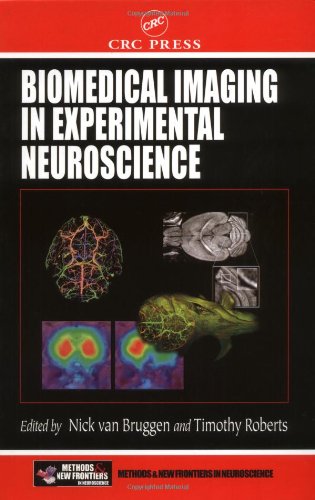Biomedical Imaging in Exp Neuro

INTRODUCTION
Magnetic resonance imaging (MRI) has become the mainstay of radiological techniques
in diagnostic imaging and the technique of choice for assessing diseases of the
central nervous system. Its utility in experimental research using laboratory animals
has inevitably lagged behind its clinical counterpart due, in part, to equipment
costs and requirements for qualiقed operators. However with technological advances,
increased availability, and deeper understanding of its physiological speciقcity
and capabilities, the utility of MRI in experimental research is assured. Its
success in clinical practice and now in experimental research — an impressive
achievement considering MRI was introduced into clinical medicine a little over two
Recent years have seen an explosion of activity in the field of biomedical imaging in an attempt to understand the behavior of the brain in healthy and disease states. With the emergence of genetically manipulated laboratory mice and the knowledge of the mouse genome, we are entering an exciting new era with revolutionary tools for experimental research. Noninvasive imaging techniques capable of providing both anatomical and functional descriptions of the brain have become essential. Among the various imaging methodologies, magnetic resonance imaging (MRI) stands in the forefront by virtue of its contrast versatility and pathophysiological specificity.Emphasizing the relationship between physiological microenvironment and macroscopic imaging signal changes, Biomedical Imaging in Experimental Neuroscience presents a comprehensive review of the noninvasive biomedical imaging techniques available for laboratory animal research. Focusing on MRI, but recognizing the multiple forms of imaging information, this book outlines the scope and limitations of these methods and analyzes their impact on in vivo neuroscience research. The book is intended for the biologist who may not have a background in the physical sciences. This applied guide also provides a concise theoretical description of the pertinent physics. Noninvasive imaging offers the obvious benefits of reducing sample sizes and identifying new and unanticipated behaviors. Biomedical Imaging in Experimental Neuroscience presents detailed information for biologists interested in how biomedical imaging may augment their in vivo research and for clinical practitioners seeking deeper insights into the association between imaging findings and disease pathophysiology.
Download
*

INTRODUCTION
Magnetic resonance imaging (MRI) has become the mainstay of radiological techniques
in diagnostic imaging and the technique of choice for assessing diseases of the
central nervous system. Its utility in experimental research using laboratory animals
has inevitably lagged behind its clinical counterpart due, in part, to equipment
costs and requirements for qualiقed operators. However with technological advances,
increased availability, and deeper understanding of its physiological speciقcity
and capabilities, the utility of MRI in experimental research is assured. Its
success in clinical practice and now in experimental research — an impressive
achievement considering MRI was introduced into clinical medicine a little over two
Recent years have seen an explosion of activity in the field of biomedical imaging in an attempt to understand the behavior of the brain in healthy and disease states. With the emergence of genetically manipulated laboratory mice and the knowledge of the mouse genome, we are entering an exciting new era with revolutionary tools for experimental research. Noninvasive imaging techniques capable of providing both anatomical and functional descriptions of the brain have become essential. Among the various imaging methodologies, magnetic resonance imaging (MRI) stands in the forefront by virtue of its contrast versatility and pathophysiological specificity.Emphasizing the relationship between physiological microenvironment and macroscopic imaging signal changes, Biomedical Imaging in Experimental Neuroscience presents a comprehensive review of the noninvasive biomedical imaging techniques available for laboratory animal research. Focusing on MRI, but recognizing the multiple forms of imaging information, this book outlines the scope and limitations of these methods and analyzes their impact on in vivo neuroscience research. The book is intended for the biologist who may not have a background in the physical sciences. This applied guide also provides a concise theoretical description of the pertinent physics. Noninvasive imaging offers the obvious benefits of reducing sample sizes and identifying new and unanticipated behaviors. Biomedical Imaging in Experimental Neuroscience presents detailed information for biologists interested in how biomedical imaging may augment their in vivo research and for clinical practitioners seeking deeper insights into the association between imaging findings and disease pathophysiology.
Download
*